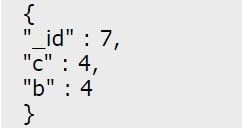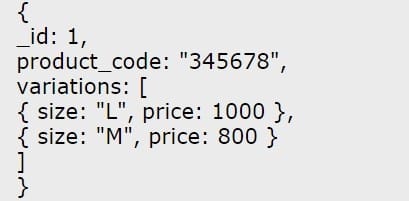Exam Details
Exam Code
:C100DBAExam Name
:MongoDB Certified DBA Associate (Based on MongoDB 4.4)Certification
:MongoDB CertificationsVendor
:MongoDBTotal Questions
:132 Q&AsLast Updated
:Jul 03, 2025
MongoDB MongoDB Certifications C100DBA Questions & Answers
-
Question 51:
Which of the following is a valid insert statement in mongodb? Select all valid.
A. db.test.push({x:2,y:"apple"})
B. db.test.insert?quot;";:2,";";";appl";})
C. db.test.insert({x:2,y:"apple"})
D. db.test.insert({x:2},{y:"apple"})
-
Question 52:
Which mongodb tool is used to report details on number of database operations in MongoDB?
A. mongostat
B. mongotop
C. mongorestore
D. mongodump
-
Question 53:
Consider the following example document from the sample collection. All documents in this collection have the same schema.

Which of the following queries will replace this with the document.

A. db.sample.update( { "_id" : 3 } , { "$set" : { "_id" : 7 , "c" : 4 > > )
B. db.sample.update( { "_id" : 3 > , { "_id" : 7 , "c" : 4 > , { "justOne" : true > ) / This operation cannot be done with a single query.
C. db.sample.update( { "_id" : 3 > , { "_id" : 7 , "c" : 4 , { "$unset" : [ "a" , "b" ] } } )
D. db.sample.update( { "_id" : 3 > , { "_id" : 7 , "c" : 4 > )
-
Question 54:
As per the aggregation pipeline optimization concepts, if you have a $sort followed by a $match:
A. Providing these parameters in any order does not impact the performance
B. $sort moves before $match
C. MongoDB does not do any movements by default and will use the order provided
D. $match moves before $sort
-
Question 55:
The MongoDB explain() method does not support which of the following verbosity mode:
A. executionStats
B. queryPlanner
C. customExecutionStats
D. allPlansExecution
-
Question 56:
Which of the following aggregation commands in MongoDB does not support sharded collections?
A. mapReduce
B. group
C. aggregate
D. All of the above
-
Question 57:
Which of the following operator can be used to control the number of items of an array that a query returns?
A. $ elemMatch
B. $slice
C. $
D. MongoDB does not support partial retrieval of items from an array
-
Question 58:
The________operator can be used to identify an element in the array to be updated without explicitly specifying the position of the element.
A. $ elemMatch
B. $slice
C. Updating an array field without knowing its index is not possible.
D. $
-
Question 59:
Which is the correct order (lowest to highest) in which MongoDB compares the BSON types?
A. Number, Null, String and Object
B. Null, Number, Object and String
C. Null, Number, String and Object
D. String, Null, Number and Object
-
Question 60:
Consider the following document from the products collection: What does the following query using $elemMatch return? db.products.find( { product_code: "345678" }, { variations: { $elemMatch: { size: ^L^ } } } )

A. Returns the complete document but retrieves only the size field from the array
B. Returns the document but with only one element in the variations array (corresponding to size L)
C. Returns the complete document since MongoDB does not support partial array retrieval
D. Returns the complete document but retrieves only the size field from the array and also with only one element in the variations array (corresponding to size L)
Related Exams:
Tips on How to Prepare for the Exams
Nowadays, the certification exams become more and more important and required by more and more enterprises when applying for a job. But how to prepare for the exam effectively? How to prepare for the exam in a short time with less efforts? How to get a ideal result and how to find the most reliable resources? Here on Vcedump.com, you will find all the answers. Vcedump.com provide not only MongoDB exam questions, answers and explanations but also complete assistance on your exam preparation and certification application. If you are confused on your C100DBA exam preparations and MongoDB certification application, do not hesitate to visit our Vcedump.com to find your solutions here.